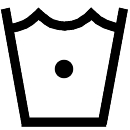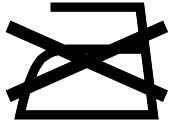Ultimate Guide to the Legal Requirements of T-Shirt Relabeling

Many t-shirt companies they want their products sold to appear to be branded whether or not they actually created the physical shirt that was printed on. In doing so many want to remove the default manufacturers tags and add your own tag to build your brand. Removing the tags is only legal if the information is replaced with the following information: fiber content, the country of origin, and the identity of the manufacturer or another business responsible for marketing or handling the item. Read this guide to avoid a “tag snag" that is enforced by the FTC as part of the Textile and Wool Acts.
Basic info required on t-shirt labels:
The following must be included on all garment labels:
- Size: S, M, L, XL.
- Material (Fiber Content): i.e. 100% Cotton or 60% Cotton 40% Polyester.
- Manufacturer: i.e. Your Business Name
- Country of Origin:
- For garments made outside the United States (most products) you can use the following text for country of origin: Made in U.S.A. of imported fabric. This will work for all garments made outside the US whether it is Thailand, China, or India.
- For garments made inside the United States, such as American Apparel products you can use the following text for country of origin: Made in U.S.A.
- Identification of Manufacturer, Importer or Other Dealer: Must include a company name or the Registered Identification Number (RN) of the manufacturer,
- Care Instructions: text and/or graphic symbol instructions
Specific Requirements for t-shirt relabeling
Size
It is required that the size of the garment is included in the garment label. You can list the size Small, Medium, Large or abbreviated like: S, M, L, XL.
Material / Fiber Content
Products covered by the Textile and Wool Acts require that the generic fiber names and percentages by weight of each constituent fiber must be labeled to show the fiber content in descending order of predominance. For example: 65% cotton / 35% polyester.
If the product is made from one fiber, you may use the word “All” instead of “100%.” For example: “100% Cotton” or “All Cotton”
The disclosure requirement applies only to fibers in yarns, fabrics, clothing and other household items. If part of the product is made from a non-fibrous material — such as plastic, glass, wood, paint, metal or leather — you don’t have to include that on your label. That includes the contents of zippers, buttons, beads, sequins, leather patches, painted designs, or any other parts that are not made from fiber, yarn, or fabric.
In general, you may name only the fibers that comprise 5% or more of the fiber weight. Fibers of less than 5% should be disclosed as “other fiber” or “other fibers” and not by their generic name or fiber trademark.
Country of Origin
Products covered by the Textile and Wool Acts must be labeled to show the country of origin.
- Imported products must identify the country where the products were processed or manufactured.
- Products made entirely in the U.S. of materials also made in the U.S. must be labeled “Made in U.S.A.” or an equivalent phrase.
- Products made in the U.S. of imported materials must be labeled to show the processing or manufacturing that takes place in the U.S., as well as the imported component.
- Products manufactured partly in the U.S. and partly abroad must identify both aspects.
Identification of Manufacturer, Importer or Other Dealer
Textile labels must also identify the company name or the Registered Identification Number (RN) of the manufacturer, importer or another firm marketing, distributing or otherwise handling the product. If the original manufacturer was Gildan brand and you wanted to remove that label you can replace it with “Your Brand Name”.
For an in-depth look at Labeling Requirements, we recommend you visit the FTC’s website at
Care Instructions
Textiles must also include care instructions that can be either symbols or text descriptions. If you have limited space then care symbols are great however not everyone knows what the symbols mean so text instructions are easier for most consumers to understand.
Text based instruction examples include:
- Wash garment inside-out in cold water
- Do not iron.
- Tumble dry low or hang-dry
- Avoid using bleach
- Do not dry clean
Examples of common care instruction symbols for t-shirts include:
 |
 |
| Machine wash cold | Lay flat and drip dry |
 |
 |
| Tumble dry on low heat | Do not iron |
You can download vector care card images to use for your labels on textile affairs.
